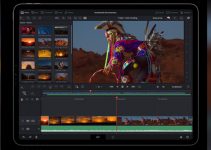The release of the Movi gimbal really shook up the stabilization world. When I first saw it I had three thoughts – this is not only great for recreating Steadicam but think of the other possible shots; I want one of these, and I wonder if there is any proprietary technology in this?
It may be that the patents weren’t that strong because almost immediately there were other companies offering very similar gimbals at lower price points. The technology advanced and now we have reached the single-hand style gimbals. Again, companies vie to offer more features in slightly different form factors but are essentially selling the same thing.
The Moza Air and the DJI Ronin-S are two of the market leaders. They look similar, do a similar job and are similarly priced so Tom Antos decided to see which one was best. Let’s have a look at his results…
Let’s put the conclusion of this video test right at the top here: These two gimbals are very similar. Watching this video tells me that with the exception of some usability differences, getting great results is much more about the operator taking the time to know the gimbal, getting the right settings and practicing.
Both operators, Tom and his friend, each have one of these gimbals and have spent more time with the one they own.
To keep the tests fair the gimbals are flying the same camera and lens combo, a Sony A6500 with a Sigma lens. I did notice that the DJI has a secondary handle and a monitor with battery attached; does this make it significantly heavier? I would like to see both compared in base set-ups.
The first test is a simple backwards walk and both gimbals perform well, as would be expected. Any differences between the two are more to do with the operator trying an unfamiliar unit.
Immediately it is noted that the settings are more easily adjusted via the hardware on the Moza than by going to the DJI app.
The next test is moving around a subject which requires the operator to move faster. The different modes of the gimbals, Follow and Sports, allow for different levels of responsiveness – useful when you start to move more quickly. There are certainly inconsistencies in speed and the smoothness of the shots in this test. The Moza Air comes out perhaps a little better.
The ‘run and stop’ test shows one thing very clearly – the responsiveness of the camera’s autofocus system. Was this set in face-detect mode? That aside, both gimbals have shake and bounce in the movement.
I characterise shake as movement in the x and y-axis’, exactly the kinds of movement that the gimbal should eliminate. The bounce is more of an issue here and that is movement in the vertical, z-axis. Practicing the now cliched ‘ninja-walk’, keeping your knees bent to cushion the movement, will help but this has always been a weak spot in gimbal operation and I find it myself with the Ronin-M that I use most often.
Both gimbals exhibit shake and bounce, but again the DJI rather more than the Moza.
The final test is using the gimbals in low-mode and transitioning upwards, in a jib style of motion, to the subject’s face. Both are nice and smooth and this should be a lovely shot that shows the power of the gimbal system. The DJI is perhaps a little bumpier again in this test.
In summary, I would say that these two systems are extremely similar. Adjusting the settings via the gimbal handle vs. the DJI app seems to be the main sticking point and I agree that this may well be a factor, particularly when the shoot is time-sensitive.
When it comes down to it though, I think the operator is the main x-factor in gimbal use. Don’t expect to get perfect shots straight out of the box, give it time and practice and whichever gimbal you get will give you some fantastic stabilization.
[source: Tom Antos]
Order Links:
Moza Air 2 3-Axis Handheld Gimbal Stabilizer (B&H, Amazon)
DJI Ronin-S Handheld Gimbal Stabilizer (B&H, Amazon)
Disclaimer: As an Amazon Associate partner and participant in B&H and Adorama Affiliate programmes, we earn a small comission from each purchase made through the affiliate links listed above at no additional cost to you.


